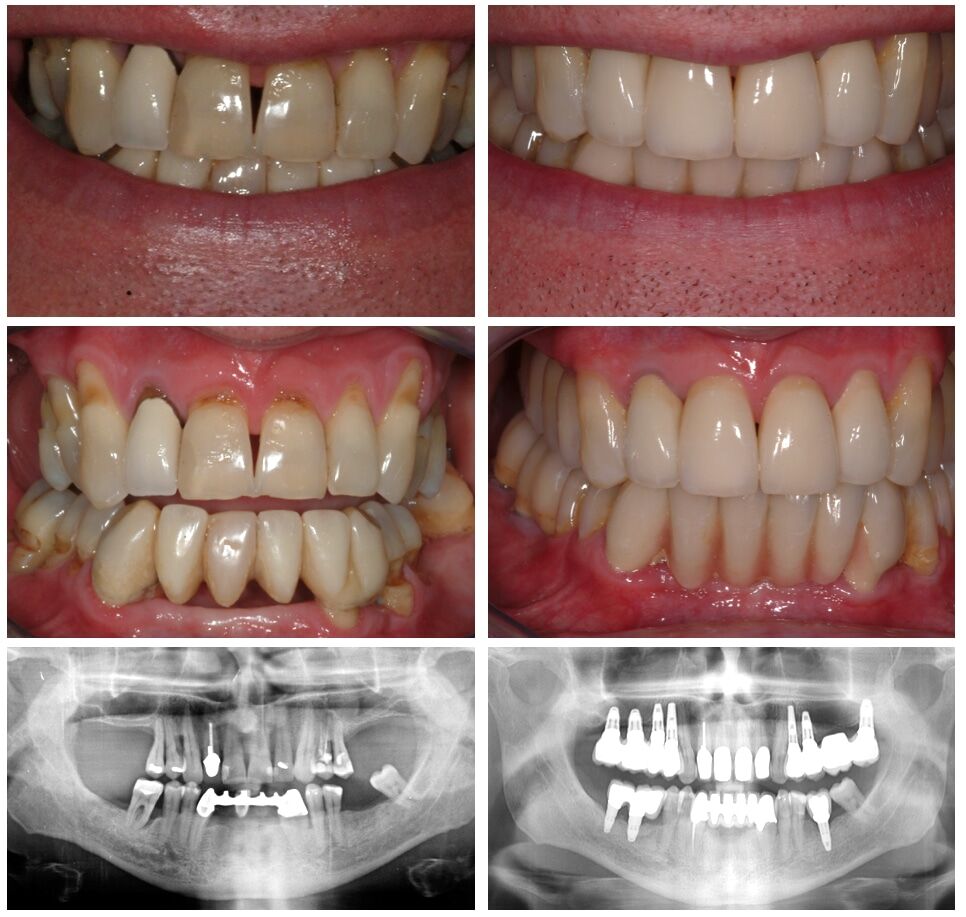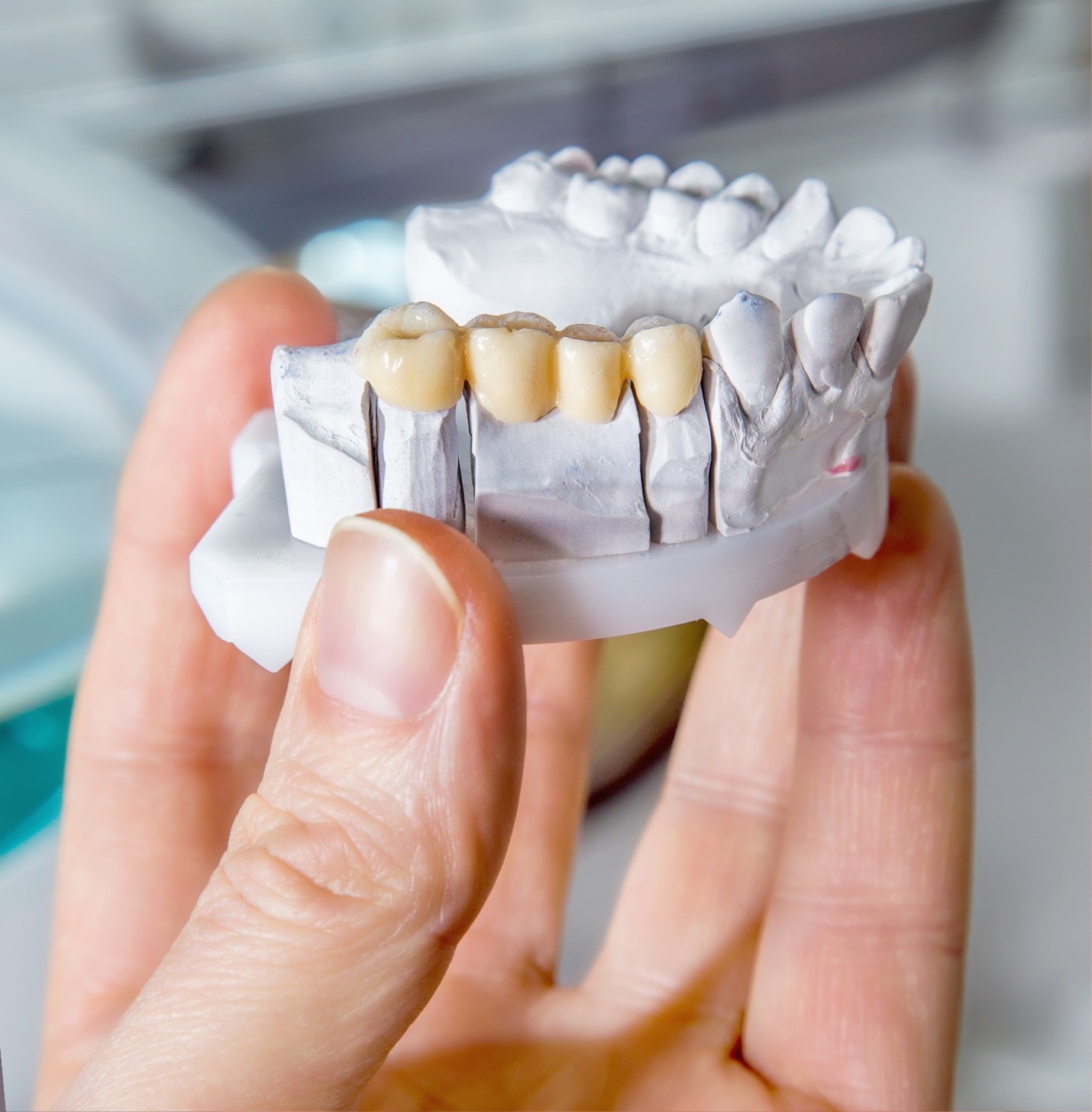How Long Do Dental Bridges Last? – Dental bridges typically last 5 to 15 years but can last even longer with proper care. Their lifespan depends on dental hygiene practices and the materials used.
Exploring the world of dental bridges offers insight into a standard solution for missing teeth. A dental bridge fills the gap created by one or more missing teeth using false teeth anchored by adjacent natural teeth or dental implants.
This procedure restores the aesthetics of a complete smile and the functionality of your teeth, making it easier to chew and speak. The materials, ranging from porcelain to ceramics and metals, play a crucial role in the bridge’s longevity. Regular check-ups, maintaining excellent oral hygiene, and avoiding hard foods can extend the life of your dental bridge. It’s a solid investment in your dental health, with the potential to provide a natural-looking smile for many years.
Introduction To Dental Bridges
One standard option for replacing missing teeth is a dental bridge. This introduction lays the foundation for understanding how they work, their longevity, and their advantages.
What Are Dental Bridges?
A dental bridge bridges the space left by one or more lost teeth. It’s made of two or more crowns for the teeth on either side of the gap. These anchoring teeth are called abutment teeth. A false tooth or teeth, known as pontics, fill the space. These components are made from gold, alloys, porcelain, or a combination of these materials.
Benefits Of Opting For Dental Bridges
- Restore your smile and the ability to chew and speak properly.
- Keep your face in its proper shape and avoid drooping.
- You can adequately distribute the forces in your bite by replacing missing teeth.
- Stop the remaining teeth from moving around.

Credit: www.advanceddentistry.co.uk
Types Of Dental Bridges
Understanding the different types of dental bridges is crucial for anyone considering this dental procedure. Dental bridges replace missing teeth, restoring your smile and the ability to chew correctly. Let’s explore the options available.
Traditional Bridges
Traditional bridges are the most common. They consist of one or more false teeth held in place by dental crowns. These crowns are cemented onto the teeth adjacent to your missing tooth.
- Material: Porcelain fused with metal or ceramics.
- Usage: When there are natural teeth on both sides of the gap.
Cantilever Bridges
Cantilever bridges are similar to traditional bridges. The main difference is that the false tooth is supported by a crown on only one side rather than both.
- Material: Porcelain fused with metal or ceramics.
- Usage: When there’s only one natural tooth next to the gap.
Maryland Bridges
Maryland bridges are less invasive. They use a metal or porcelain framework attached to the backs of the adjacent teeth.
- Material: Porcelain, metal, or a combination.
- Usage: Often used for front teeth.
Implant-supported Bridges
Dental implants anchor implant-supported bridges. In the jawbone, implants are inserted for every lost tooth.
- Material: Various, including porcelain and metal.
- Usage: When multiple teeth are missing.
- Benefit: High stability and support.
Average Lifespan Of Dental Bridges
Understanding the average lifespan of dental bridges is critical for anyone considering this dental solution. Dental bridges typically last 5 to 15 years with proper care and maintenance, sometimes even longer.
Factors Influencing Bridge Longevity
Several factors affect how long a dental bridge will last. These include:
- Material quality: Higher quality materials tend to last longer.
- Oral hygiene: Good oral care can extend the life of a bridge.
- Dental habits: Avoiding hard foods and not chewing on non-food items help longevity.
- Regular check-ups: Frequent visits to the dentist for adjustments and examinations are crucial.
Comparing Lifespans Of Different Bridge Types
Dental bridges come in various types, each with a different expected lifespan.
| Type of Bridge | Expected Lifespan |
|---|---|
| Traditional bridges | 5-15 years |
| Cantilever bridges | 5-10 years |
| Maryland bridges | 5-15 years |
| Implant-supported bridges | 10-20 years |
Choosing the right type depends on individual needs and dental advice.

Credit: www.newhavendentalbranford.com
Maximizing The Lifespan Of Your Dental Bridge
Dental bridges are a widely used treatment for tooth loss. A well-crafted bridge can restore your smile and improve your ability to chew and speak. With proper care, dental bridges can last many years. The following practices help maximize their lifespan.
Proper Oral Hygiene Practices
Maintaining a dental bridge requires diligent oral hygiene. The following are essential steps to take:
- Brush twice daily with fluoride toothpaste to prevent plaque buildup.
- Floss daily using special aids like floss threaders to clean under the bridge.
- Use antiseptic mouthwash to kill bacteria and freshen your breath.
Regular Dental Checkups
Visiting the dentist regularly is vital. Here’s what to expect:
- Get a professional cleaning every six months.
- Have your bridge checked for fit and function periodically.
- Address any issues early to prevent damage to your bridge.
Mindful Eating Habits
What you eat affects your dental bridge. Follow these tips:
| Do’s | Don’ts |
|---|---|
| Eat a balanced diet. | Avoid hard foods like ice. |
| Chew food evenly on both sides. | Stay away from sticky sweets. |
| Choose softer foods to reduce strain. | Skip using teeth as tools for opening things. |
Common Causes Of Dental Bridge Failure
Dental bridges can restore smiles, but they don’t last forever. Let’s explore common reasons they might fail.
Poor Dental Hygiene
Dental bridges require care just like natural teeth. Without proper hygiene, problems arise. Bacteria and food particles cause decay. This affects the anchoring teeth, known as abutments, jeopardizing the bridge.
- Brush twice daily
- Floss under the bridge
- Use antiseptic mouthwash
- Get regular dental check-ups
Physical Damage
Accidents or hard foods can damage bridges. Chips or cracks can occur, leading to the need for repair or replacement. To protect your bridge:
- Avoid chewing ice or hard candy
- Don’t use teeth as tools
- If you grind your teeth, use a mouthguard.
Wear And Tear Over Time
Just like natural teeth, bridges wear down. Material fatigue can lead to failure. The lifespan of a dental bridge is typically 5 to 15 years. Factors affecting this include:
| Material | Durability | Maintenance |
|---|---|---|
| Porcelain | Less durable, prone to chips | Regular professional cleaning |
| Metal | More durable, resistant to force | Periodic check-ups |
| Composite | Medium durability | Avoid hard foods, maintain hygiene |
When To Replace Your Dental Bridge
Dental bridges are a widely used method of rebuilding lost tooth structures. They restore your smile and improve chewing function. Yet, these dental appliances do not last forever. Knowing when to replace your dental bridge is critical to maintaining oral health.
Signs Of Wear And Damage
Dental bridges typically last 5 to 15 years before needing replacement. Still, several signs indicate it’s time for a new one:
- Chewing problems: Difficulty or discomfort while eating can signal bridge failure.
- Visible damage: Cracks or chips in the bridge need immediate attention.
- Shifting teeth: Gaps or movement in adjacent teeth can affect bridge fit.
- Sensitivity or pain: These symptoms suggest the bridge may be damaged.
- Bad breath or taste: Persistent issues could mean decay under the bridge.
Consulting With Your Dentist
Annual check-ups help catch issues early. If you notice any signs of wear, book an appointment. Your dentist will assess the bridge’s condition. They may recommend repair or replacement based on their findings. Preventive care extends the life of your dental bridge.
Remember: Keep up with regular cleanings and exams. This helps catch potential problems before they worsen. A well-cared-for dental bridge can serve you well for many years.
Innovations In Dental Bridge Technology
The landscape of dental restoration is rapidly evolving with cutting-edge innovations. Today, dental bridges, a staple in dental prosthetics, benefit from these advancements. These innovations aim to enhance durability, comfort, and aesthetic appeal.
New Materials For Longer-Lasting Bridges
Dental science has made leaps in the materials used for bridges. Traditional materials like porcelain fused to metal (PFM) are giving way to newer, robust options.
- Zirconia bridges: They offer strength and a natural look.
- Porcelain: It improves color matching for a seamless blend with natural teeth.
- Composite resin: This is a cost-effective alternative with pleasing aesthetics.
These materials extend the life of dental bridges. They hold up throughout time and resist deterioration.
Advancements In Dental Procedures
Technological progress is not limited to materials. The procedures for installing bridges have also improved.
Digital impressions: They create precise mouth models for a perfect bridge fit.
3D printing speeds up the bridge-making process, allowing rapid prototyping and production.
Minimally invasive techniques: These reduce recovery time and discomfort post-procedure.
Such advancements lead to bridges that not only last longer but also provide a better experience for the patient.
Cost Vs. Longevity: Is It Worth The Investment?
Investing in dental bridges involves understanding their cost and how long they last. This balance between expense and durability often raises the question: Is it worth the investment?
Analyzing The Cost-effectiveness Of Dental Bridges
Dental bridges, with proper care, can last five to fifteen years, sometimes even longer. Their lifespan depends heavily on daily hygiene practices and regular dental check-ups. This durability makes them a cost-effective solution compared to other dental procedures that might require more frequent replacements or adjustments.
| Type of Bridge | Average Cost | Estimated Lifespan |
|---|---|---|
| Traditional | $2,000 – $5,000 | 5-15 years |
| Cantilever | $2,000 – $5,000 | 5-15 years |
| Maryland | $1,500 – $2,500 | 5-15 years |
Considering the above table, bridges offer a long-term solution for missing teeth, balancing initial costs against the bridge’s longevity.
Insurance And Financing Options For Dental Bridges
Many dental insurance plans cover a part of the cost of dental bridges. The coverage typically ranges from 50% to 80% of the total cost, depending on the insurance policy. This substantial support can make dental bridges a more accessible option for many people.
- Check your dental insurance for specific coverage details.
- Consider financing options such as payment plans or dental discount programs.
- Some dentists offer sliding scale fees based on income.
Exploring these options can significantly reduce out-of-pocket expenses, making dental bridges a worthwhile investment for those seeking long-term dental solutions.
Patient Testimonials And Success Stories
Dental bridges can transform smiles and lives. Real people share their stories to showcase the true impact of this dental solution. Let’s dive into their experiences and see the changes through their eyes.
Real-life Experiences With Dental Bridges
Countless patients have seen remarkable benefits from dental bridges. Their stories often highlight increased confidence and comfort. Here are some shared experiences:
- John, 45: “I can now smile again thanks to my dental bridge.” I feel like a new person.”
- Sarah, 32: “Eating is no longer painful. My bridge fits perfectly.”
- Mark, sixty: “I was concerned about appearances, but it’s not noticeable. Friends noticed my smile, not my bridge.”
Before And After Comparisons
Visuals speak volumes. Patients provide photos to show their transformations. These comparisons often reveal dramatic improvements:
| Before | After |
|---|---|
| The gap from missing teeth | Seamless, full smile |
| Uneven bite and discomfort | Even bite and no pain |
| Self-consciousness in social settings | Boosted confidence and joy |
These before and after stories show a dental bridge’s powerful impact. Not only do they restore function, but they also bring back the joy of a full smile.

Credit: www.advanceddentistry.co.uk
Conclusion: Ensuring Your Dental Bridge Lasts
Proper care and regular dental visits can maximize the longevity of your dental bridge. Adhering to these practices can significantly extend the life of your bridge, ensuring a lasting smile.
A dental bridge can be a durable solution for missing teeth. Its lifespan depends on proper care. Simple daily habits can extend its life significantly. Maintaining good oral hygiene is essential.
Final Thoughts On Dental Bridge Maintenance
- Brush twice daily with fluoride toothpaste.
- Floss under the bridge regularly.
- Use an antiseptic mouthwash to prevent infections.
- Attend regular dental check-ups.
- Avoid hard foods that can damage the bridge.
- Stop habits that may harm, like nail-biting or pencil-chewing.
Adopt these practices for a lasting dental bridge. They are easy to follow and vital for maintenance.
Reiterating The Importance Of Dental Health
Dental health is essential for a vital bridge. Neglect can lead to issues like decay or gum disease, which can shorten the bridge’s lifespan.
| Good Practice | Benefits |
|---|---|
| Regular Cleaning | Prevents plaque build-up |
| Professional Check-Ups | Early problem detection |
| Healthy Diet | Reduces risk of decay |
A focus on overall dental health is crucial. Protect your bridge with these core practices.
Frequently Asked Questions
What Is The Downside Of A Dental Bridge?
A dental bridge can lead to bone loss under the pontic, require alteration of adjacent healthy teeth, and may not last as long as implants.
Can A Dental Bridge Last 30 Years?
A dental bridge can last up to 30 years with proper care and maintenance. Regular dental check-ups and good oral hygiene are crucial for longevity. Factors like material quality and individual habits also play a significant role.
What Is The Life Expectancy Of A Dental Bridge?
The average life expectancy of a dental bridge is 5 to 15 years, depending on maintenance and oral hygiene practices. Regular dental check-ups can help extend its lifespan.
What Happens When A Dental Bridge Wears Out?
A worn-out dental bridge can lead to improper fit, discomfort, and potential damage to adjacent teeth, necessitating professional replacement or repair.
Conclusion
Dental bridges provide a dependable way to replace lost teeth. With proper care, they typically last 5 to 15 years. Prioritizing oral hygiene and regular dental check-ups can extend their lifespan. Remember, the longevity of your bridge depends on daily habits and professional support.
Maintain them well, and they’ll reward you with a confident, lasting smile.

Hello there! I’m here to assist you with health tips and tricks. Whether you’re looking to boost your energy, improve your sleep, or enhance your overall well-being, I’m here to guide you with strategies and frameworks that can empower you to make positive changes.
First and foremost, it’s important to understand that health is a holistic concept encompassing various aspects of physical, mental, and emotional well-being.

